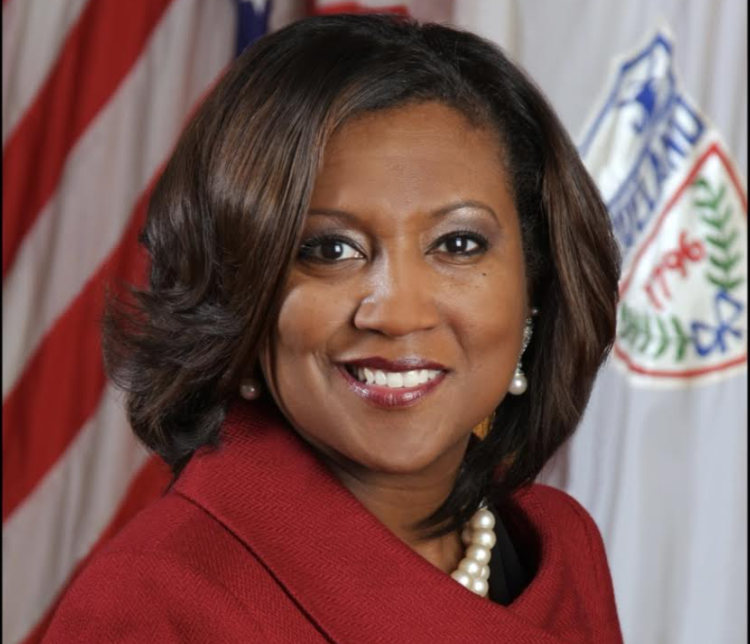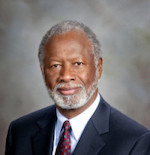As the dust settled on election night, Republicans who led the push to restrict constitutional amendment initiatives with Issue 1 began making excuses, shifting blame and promising retribution. Instead of placing a period on a disappointing months-long campaign, they offered an ellipses — steadfastly refusing to acknowledge their effort was out of step with Ohio voters.
Senate President Matt Huffman and Secretary of State Frank LaRose both issued defiant statements late Tuesday night as it became clear their side had lost. House Speaker Jason Stephens, on the other hand, seemed ready to move on.
“The people of Ohio have spoken,” he said. “It is now time to turn our attention to November. As a 100% pro-life conservative, we must defeat Issue 1 on November 7 to stop abortion from being a part of our state’s constitution.”
In some sense, Stephens owes his position to the debacle that eventually became Issue 1. He allowed a vote on legislation placing it on the ballot, but not before dragging the process past the deadline to appear in May’s primary.
The sponsor of that legislation, Rep. Brian Stewart, R-Ashville, continued to voice concerns about the influence of “out-of-state dark money” groups.
“However,” he wrote, “the voters have spoken, so we must now move forward and work together to carefully protect Ohio’s Constitution in the electoral contests that inevitably lie ahead.”
In the end, although House Republicans were loathe to publicly oppose the Issue 1 effort, support was never as unified as backers claimed. Republican members voiced misgivings about the timing, cost and optics.
In their attempt to relitigate the election, Huffman and LaRose largely ignore those institutional hurdles. Despite a 14-point drubbing, according to unofficial results, they insist Issue 1 was “a fight worth having,” and hinted that fight isn’t over.
Scores to settle
Huffman in particular called out “current and former elected officials” for failing to campaign hard enough for the proposal.
“This was a heavy lift and we needed ‘all hands-on deck,’ which disappointingly we didn’t have,” Huffman said in a statement.
Speaking to reporters, he singled out former GOP officials Gov. John Kasich, Gov. Bob Taft and Attorney General Betty Montgomery. All three spoke out against Issue 1. Montgomery even joined former Democratic Gov. Dick Celeste to represent the ‘No’ side at a City Club of Cleveland forum.
But Huffman was clearly frustrated with current Republican officials as well. Ohio lawmakers approved a six-week abortion ban in 2019, but it was only in effect for a few months before being put on hold by the courts as litigation proceeds. Pressed about Gov. Mike DeWine’s suggestions that lawmakers approve new abortion legislation ahead of November’s vote, Huffman shot back.
“Well, I would like to hear Gov. DeWine’s suggestions as to what he thinks that should look like, one,” Huffman said, “And two, I’d like to hear the Speaker of the House’s suggestions as to what he thinks that should look like, also.”
The Senate president took aim at the Ohio Business Roundtable as well. Traditionally a reliable Republican ally, the organization remained neutral on Issue 1 because of its connection to abortion. Huffman criticized them for that reticence after urging lawmakers to propose a similar ballot measure in 2018.

Money and timing
LaRose and Huffman both complained the ‘yes’ campaign didn’t have the resources to adequately fund its campaign.
LaRose argued, “Unfortunately, we were dramatically outspent by dark money billionaires from California to New York.”
Huffman echoed that point and further claimed they didn’t have enough time. “The opposition had twice the money coming from NY, CA and D.C., and a head start,”
Lawmakers, of course, decided the timing of the election.
The One Person One Vote coalition did outspend the ‘yes’ campaign, but the difference wasn’t exactly dramatic. As of Aug. 7, the ad tracking firm Medium Buying put the ‘no’ side’s TV and radio ad spending at about 56% of the total. Less than a week prior, that spending was effectively equal.
The only way to argue that One Person One Vote outraised the ‘yes’ campaign is to decouple the campaign for Issue 1 in August from the campaign against abortion rights in November. That’s harder than it looks given how those efforts were intermingled.
The organization ostensibly focused on November (Protect Women Ohio) outspent the group focused on August (Protect Our Constitution) almost 3 to 1 on campaign ads — in the August election.
In addition to having similar names, both groups were set up by the same conservative lawyer, David Langdon. Although One Person One Vote raised $14.8 million in the run up to August’s election, the web of groups aligned against them raised $20.7 million.
Both sides relied heavily on out-of-state dollarsto fund their efforts. In fact, the primary ‘yes’ campaign committee, Protect Our Constitution, got more than 80% of its funding from a single out-of-state billionaire. Still, LaRose and Huffman framed their campaign as a sort of rearguard action holding off an onslaught of out-of-state money.
In reality, the campaign against Issue 1 wouldn’t exist if lawmakers didn’t put in on the ballot. The committees on both sides got about 15% of their funding from Ohioans.
What’s next
LaRose claimed, “there’s an assault coming on our constitution, and that hasn’t changed.”
The examples he offered don’t indicate he’s moderating his rhetoric after such a substantial defeat.
LaRose described November’s abortion rights amendment as “shut(ting) parents out of a child’s life-altering medical procedure.” That echoes anti-abortion groups’ dubious argumentthat the proposal would invalidate parental notification laws.
He described a proposed minimum wage amendment as “job killing wage mandates.” The proposal would phase in a $15 minimum wage by 2026. LaRose also warned about proposals that would “prevent law abiding citizens from protecting their families and remove critical protections for our first responders.” The Attorney General certified a measure requiring universal background checks in 2019, and a proposal to end qualified immunity which shields police officers accused of harming citizens has been repeatedly rejected.
None of the three has collected the signatures required to make the ballot.
Huffman wasn’t deterred either. He argued a proposal restricting constitutional amendments is “probably going to come back.”
But he didn’t stop there. Even if November’s reproductive rights amendment is successful, he promised a response.
“If it passes in November,” Huffman said, “there’s going to be another abortion amendment to go on after that, to repeal that.”
• • •• • •
This story is provided by Ohio Capital Journal, a part of States Newsroom, a national 501 (c)(3) nonprofit. See the original story here.




















